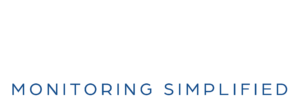Introduction: In an industry that is as dynamic and rapidly evolving as the electrical sector, being proactive is more crucial than ever before. While traditional asset management practices have served us well, we are at the cusp of a revolution, one spearheaded by Harnessing Predictive Electrical Asset Management. Leveraging real-time data, predictive asset management (PAM) paves the way for safer, more efficient operations. In this , we delve deep into the strategic insights that are shaping the next frontier in electrical asset management.
The Advent of Predictive Asset Management
In recent years, the electrical industry has been experiencing a seismic shift in demand and supply patterns, i.e. governments pushing for more renewable generation and growing electrical vehicle. These changes are forcing asset managers and operators to move away from reactive methodologies and adopt a more forward-thinking approach. At the heart of this transition lies Predictive Asset Management (PAM), a revolutionary strategy that is redefining the paradigms of electrical asset monitoring and maintenance. As industry professionals, understanding and adapting to this evolving landscape can propel your business to new heights, offering not just substantial returns on investment but also fostering a safer and more efficient work environment.
Harnessing Predictive Electrical Asset Management goes beyond just a shift in technology; it represents a transformative approach to how we perceive and handle asset management in the electrical industry. The core of PAM lies in its ability to predict potential issues before they occur, allowing for timely interventions and drastically reducing unplanned downtimes. In the era of digitalization, it marries state-of-the-art technology with insightful data analytics, offering a proactive approach to asset management that is both dynamic and responsive.
To fully appreciate the advent of Predictive Asset Management, one needs to consider its foundation: real-time monitoring. This entails the continuous surveillance of electrical assets, collecting data that feeds into predictive algorithms. These sophisticated algorithms analyse patterns and trends, helping professionals foresee potential glitches or failures before they manifest. This level of foresight is invaluable, providing a safety net that not only prevents accidents but also aids in maintaining the integrity and longevity of the assets.
Moreover, Predictive Asset Management provides a granular insight into the performance metrics of electrical assets. It empowers professionals to fine-tune operations, identifying areas where efficiency can be improved and resources can be allocated more judiciously. In doing so, it contributes to a leaner, more optimized operational framework that holds significant benefits for both the organization and its clients.
Furthermore, adopting Predictive Asset Management is a testimony to an organization’s commitment to innovation and excellence. It showcases a readiness to embrace the future, adopting solutions that are aligned with global trends in sustainability and technological advancement. As professionals in the electrical industry, integrating PAM into your business strategy can serve as a beacon of excellence, setting a benchmark for others to follow.
Benefits of Real-Time Monitoring
Harnessing Predictive Electrical Asset Management is synonymous with leveraging the data that is already available from asset testing and visual inspections and improving prediction with the help of real-time monitoring capabilities. This segment focuses on the multitude of benefits that come with real-time data, including improved safety and operational efficiency.
In the dynamic environment of the electrical industry, the ability to make data-driven decisions swiftly is more crucial than ever. Real-time monitoring, a pivotal aspect of Predictive Asset Management, stands as a cornerstone in achieving this agility, providing a plethora of benefits that have the potency to revolutionize the sector. To remain at the forefront of industry advancements, it’s imperative that asset managers and maintenance engineers alike understand and leverage the numerous advantages that come with implementing real-time monitoring systems.
The primary advantage of real-time monitoring is, undoubtedly, the significant enhancement of operational safety. By offering instantaneous feedback on the performance and condition of various electrical assets, it facilitates the early detection of potential anomalies or faults. This enables timely interventions, averting catastrophic failures and ensuring the safety of both personnel and assets. Moreover, by preempting unforeseen breakdowns, it aids in maintaining a consistent operational flow, avoiding costly downtimes and promoting efficiency.
Harnessing Predictive Electrical Asset Management takes this a notch higher by not only identifying potential issues but also suggesting predictive maintenance schedules. Through a meticulous analysis of real-time data, it enables professionals to optimize maintenance operations, ensuring that resources are utilized judiciously and maintenance is carried out at optimal intervals. This not only extends the lifespan of the assets but also ensures that they operate at peak efficiency, thereby contributing to a more sustainable business model.
Furthermore, real-time monitoring serves as a valuable tool in enhancing the reliability of electrical assets. By providing a continuous stream of data on asset performance, it allows for a more nuanced understanding of asset behavior over time. This insight is vital in facilitating informed decision-making, helping asset managers and operators strategize and plan for the future with a greater degree of accuracy.
In addition, the integration of real-time monitoring into Predictive Asset Management systems enables a more streamlined approach to asset management. It fosters a collaborative environment where data is shared seamlessly across various departments, facilitating a data driven faster and accurate decision process in asset management.
Lastly, it is worth noting that real-time monitoring is a potent tool in fostering innovation. By providing a wealth of data, it offers a fertile ground for developing more accurate and advance machine learning analytics on asset heath assessment and predictive maintenance.. As we navigate the complexities of the modern electrical industry, the role of real-time monitoring in enhancing Predictive Asset Management cannot be emphasized enough. It stands as a beacon of progress, illuminating the path towards a safer, more efficient, and sustainable future in the electrical industry.
Integrating PAM into Your Asset Management and Maintenance Strategy
Integration is key to unlocking the full potential of predictive asset management. This section delineates the strategic insights necessary for a seamless integration of PAM into company’s asset management and maintenance strategy, emphasizing on a structured approach to implementation.
In the rapidly evolving landscape of the electrical industry, the integration of Predictive Asset Management (PAM) into Asset Management and Maintenance strategies is no longer a novelty but a necessity. To thrive in this competitive market, asset managers and maintenance engineers must not only acknowledge the importance of PAM but also adeptly integrate its practices into their business frameworks. Harnessing Predictive Electrical Asset Management can act as a linchpin in fostering a business model that is both resilient and adaptable, setting the stage for sustained growth and success.
At the outset, integrating PAM involves a comprehensive assessment of the existing asset management infrastructure. Professionals should undertake a thorough analysis to identify potential gaps and areas where the application of predictive analytics can offer significant enhancements. This step is crucial as it forms the foundation upon which the entire integration process is built, paving the way for a more structured and streamlined approach to asset management.
Subsequently, the focus should shift towards the selection of appropriate monitoring tools and software. In this digital era, a plethora of advanced solutions are available, offering varied functionalities and capabilities. Choosing the right tools that align with your business objectives and operational needs is pivotal. It ensures that the data gathered is not only accurate but also relevant, aiding in the formulation of informed strategies and decisions.
Moreover, the integration of Predictive Asset Management should be viewed as a continuous process rather than a one-time project. It necessitates a proactive approach, where strategies are constantly evaluated and refined based on the insights derived from real-time monitoring. This dynamic approach ensures that your business remains at the forefront of industry advancements, ready to adapt and evolve in response to changing market dynamics.
Furthermore, collaboration with stakeholders is vital in ensuring the success of the integration process. Engaging with industry experts, asset monitoring vendors, and other stakeholders can provide fresh perspectives and insights, aiding in the formulation of strategies that are both innovative and grounded in industry realities.
In conclusion, the integration of PAM into your Asset Management and Maintenance strategy is a complex yet rewarding endeavor. When approached with foresight and strategic insight, it holds the potential to revolutionize your business model, setting the stage for a future marked by innovation, efficiency, and sustained growth.
Case Studies – Success Stories and Lessons Learned
An empirical approach often yields the best insights. This segment delves into various case studies, presenting a panorama of success stories and invaluable lessons learned from businesses that have successfully incorporated predictive asset management in their operations. These real-world examples serve not only as a testament to the efficacy of PAM but also as learning platforms to avoid potential pitfalls and achieve optimization.
In one notable instance, a prominent utility firm managed to overhaul its asset management strategy by integrating predictive analytics into its operational framework. Prior to the implementation of PAM, the firm faced frequent unplanned downtimes, which significantly hampered its productivity. However, post-integration, the firm witnessed a marked reduction in equipment failures. The real-time monitoring and analytics enabled them to identify potential issues well in advance, allowing for preventative maintenance measures that enhanced the longevity and performance of their assets. This shift not only resulted in substantial cost savings but also fostered a safer and more efficient working environment.
Similarly, another success story revolves around a manufacturing company with heavy usage of electricity. The firm embraced Predictive Asset Management to monitor the performance of its electrical assets that provides power to critical processes. This move proved to be a game-changer. The data harvested from real-time monitoring allowed for nuanced insights into the functioning of various assets, enabling the firm to streamline its processes, avoid production looses due to sudden outages, and enhance production efficiency. Furthermore, the predictive analytics facilitated optimized resource allocation, helping the company to reduce wastage and improve its bottom line substantially.
However, the journey to successful integration of PAM is not devoid of challenges, as evidenced by a few cases where companies stumbled in their initial attempts. One such case highlighted the importance of selecting the right monitoring tools and software. The company in question faced significant hurdles due to the integration of incompatible systems, which resulted in data discrepancies and hindered the seamless flow of information. This case serves as a reminder of the critical role that appropriate tool selection plays in the successful implementation of Predictive Asset Management strategies.
Additionally, another lesson to be noted is the necessity for adequate training and skill development. A case pointed to a scenario where the lack of skilled personnel impeded the full realization of the benefits of PAM. It underscored the importance of investing in training programs to equip the workforce with the necessary skills to navigate the complex landscape of predictive asset management proficiently.
As working professionals in the electrical industry aim to integrate PAM into their business strategies, these case studies serve as valuable repositories of knowledge, offering both inspiration and guidance. By analyzing these success stories and learning from the experiences of others, professionals can forge a path that is marked by innovation, foresight, and sustained growth in the realm of electrical asset monitoring.
Future Trends and Predictions
In the ever-progressing field of electrical asset management, the future promises even greater strides, especially with the integration of Predictive Asset Management (PAM) systems, utilizing the real-time monitoring data in improving accuracy of prediction and higher degree of automation.
One of the paramount developments to watch is the integration of Artificial Intelligence (AI) and Machine Learning (ML) within the predictive maintenance frameworks. These technologies are expected to bring a higher level of accuracy and efficiency in predicting asset failures. Sophisticated algorithms will be capable of analyzing large datasets in real time, identifying patterns and trends that were previously undetectable. This augmentation will undoubtedly usher in a new era of precision and foresight in asset management. Digital twin models for installed electrical assets with flexibility to run simulation and scenario analysis is becoming a reality.
Another significant trend is the increasing emphasis on sustainability and environmental conservation. Predictive Asset Management systems will play a pivotal role in facilitating green operations by optimizing resource usage and minimizing waste. Companies will likely leverage PAM to comply with stringent environmental regulations, ensuring that their operations are not only efficient but also sustainable. This shift towards eco-friendly practices is expected to gain momentum, with PAM at the forefront, leading the charge.
Furthermore, the proliferation of the Internet of Things (IoT) is set to revolutionize the electrical asset monitoring landscape. IoT devices can provide a wealth of data from a myriad of sensors and endpoints, offering a granular view of asset performance. This extensive network of connected devices promises to bring a new level of interconnectivity and data exchange, fostering collaborative and informed decision-making processes.
In addition, the focus on cybersecurity will intensify as companies embrace digital transformation. As predictive asset management systems rely heavily on data, ensuring the security and integrity of this data will be paramount. Companies will need to invest in robust security measures to safeguard against potential cyber threats, ensuring the smooth and secure operation of PAM systems.
Moreover, a trend towards personalized and adaptable PAM solutions is anticipated. Companies will seek solutions that are tailor-made to suit their specific needs and operational dynamics. This customization will allow for a more nuanced and effective approach to asset management, catering to the unique demands of different organizations.
As the industry moves forward, it is evident that Predictive Asset Management will continue to be at the helm, guiding companies towards a future marked by innovation, efficiency, and sustainability. By staying abreast of these trends and predictions, working professionals in the electrical industry can position themselves strategically, ready to embrace the opportunities and challenges that lie ahead in the vibrant landscape of electrical asset monitoring.
Conclusion
As we navigate the intricate pathways of the electrical industry, the significance of evolving and adapting cannot be understated. Harnessing Predictive Electrical Asset Management not only signals a shift in operational dynamics but also heralds a new epoch of safety and efficiency. By integrating predictive asset management strategies into our business frameworks, we stand poised to usher in a future marked by innovation, sustainability, and unparalleled excellence. It is no longer about keeping up; it’s about leading the way, setting new standards, and carving paths that others aspire to tread upon. Let us embrace the change with foresight and strategic insight, propelling the industry into a future brimming with potential and promise.



